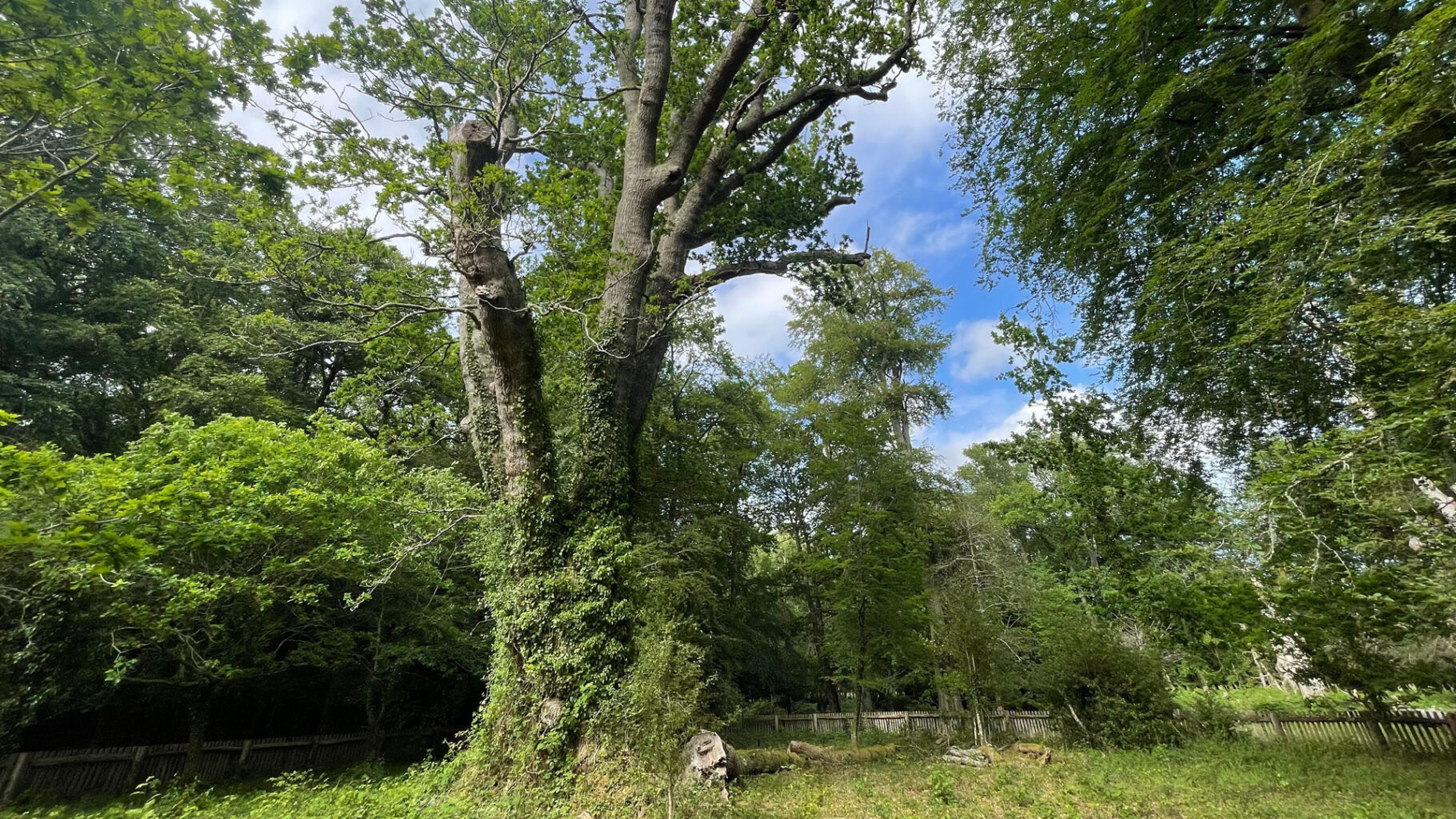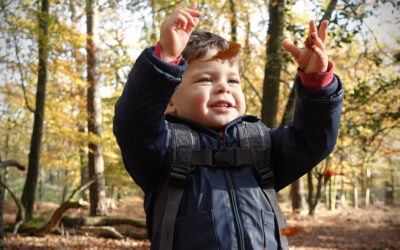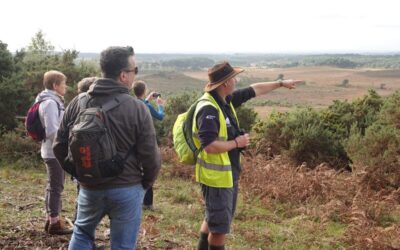The New Forest has the greatest concentration of ancient trees in Europe with more than 1,000 recorded.
Go on a walk through the forest’s ancient and ornamental woodlands and you could be passing oaks that may be between 400 and 800 years old, while beech can last up to 400 years.
As such, these trees are a living link to our history. Some of these now-mighty oaks were saplings at the time of the English Civil War or when Elizabeth I was on the throne.
Ancient trees are vital to the eco-system of the forest – the twisted bark, hollows and dead wood provide a multitude of specialist habitats, including nest sites for birds, while lichens, beetles, bats and fungi have been sustained by them over centuries.
Many have survived thanks to the practice of pollarding. This was the regular cutting of branches above the height that grazing animals can reach – preventing damage to the new shoots and the eventual loss of the tree.
Pollarding also produces a distinctive shape to the tree with the trunk often developing thicker beneath the branches to support their weight.
English history has also made its mark in shaping the New Forest’s woodlands. From late 17th Century, the forest’s role as a vast hunting park was gradually being replaced by the need for timber for commercial and military use.
Pollarding was ended and inclosures were created to prevent animals from damaging oak trees which were grown to built ships for the expanding Royal Navy.
Buckler’s Hard on the Beaulieu River was established as a military shipyard. In total, more 50 ships were built for the navy along the Beaulieu River – including the Agamemnon – Admiral Horatio Nelson’s favourite ship.
Enjoy a walk back into the history of shipbuilding on a walk along the riverside from Beaulieu to Buckler’s Hard.
The New Forest’s ancient, veteran and notable trees are recorded and documented by the Woodland Trust’s Ancient Trees Directory.
The Elephant Oak

With a branch bearing a remarkable likeness to an elephant’s trunk, the Elephant Oak in Old Sloden Inclosure near Fritham was nominated as one of the UK’s top ten favourite trees for the Woodland Trust’s Tree of the Year 2024.
Visit the tree as an extension to a walk from the High Corner Inn at Linwood.
The Knightwood Oak
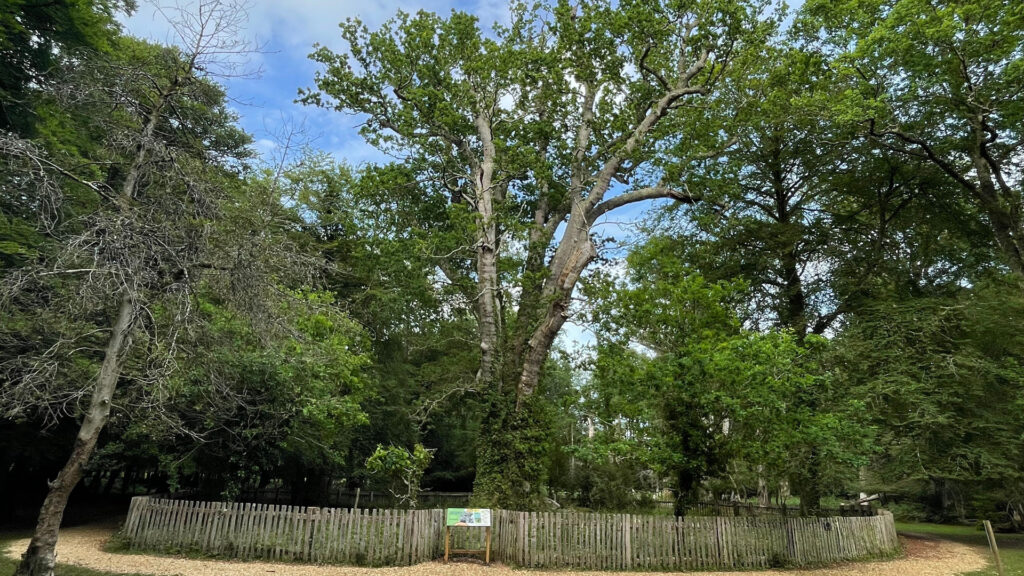
Known as the Queen of the Forest, the regal Knightwood Oak is thought to be about 600 years old and, as such, is one of the oldest trees in the New Forest.
Over the centuries, the Knightwood Oak has been pollarded and the tree’s trunk has grown to a circumference of some 7m. It has been an attraction since Victorian times when visitors from London began travelling to the New Forest by train.
The tree can be visited on the short walk through Monarch’s Grove, recently upgraded with better accessibility, improved paths and picnic benches.
The trail can be enjoyed as part of our Eagle Oak – Knightwood Oak walk, a 4 or 2-mile route linking the Knightwood Oak with another of the New Forest’s magnificent ancient trees, the nearby Eagle Oak.
Alternatively a route from the Knightwood Oak car park takes in the tree itself before heading through the woods to the New Forest Reptile Centre.
The Eagle Oak
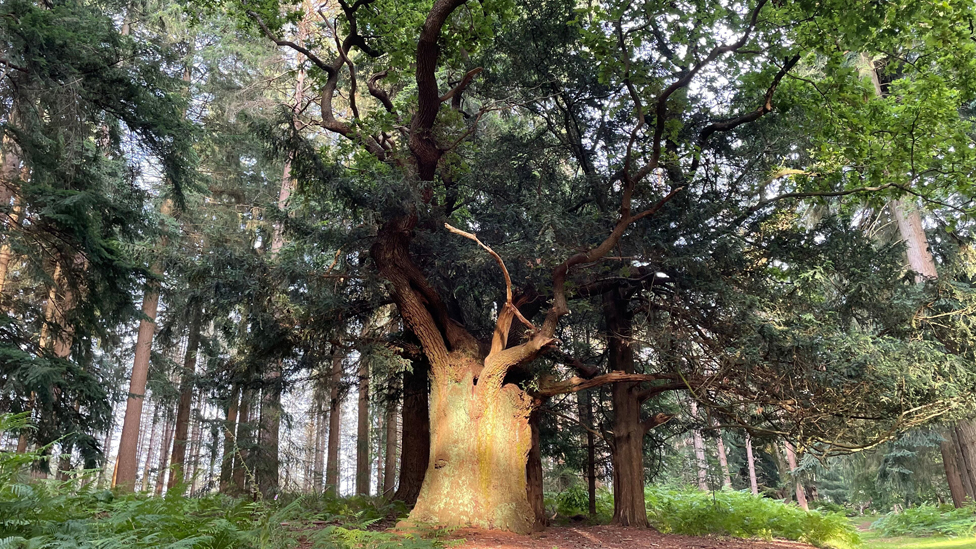
A short walk from the Knightwood Oak is the Eagle Oak. With the branches of a yew tree entangled amongst its own, the pollarded Eagle Oak has a girth of about 5.4m.
It is so-named as it is thought that the last remaining sea eagle (or White Tailed Eagle) in southern England was shot from its branches in the early 19th Century.
However the tree has survived to see the return of the birds of prey – thanks to a conservation and breeding project set up on the Isle of Wight by the Roy Dennis Wildlife Foundation. The white-tailed eagle, or sea eagle, is the UK’s largest bird of prey with a wing span of up to 2.5m.
The can be found alongside a track through Knightwood Inclosure on a walk from Anderwood which takes in both the Eagle and Knightwood Oaks.
St Nicholas’ Church Yew
The three oak trees are mere youngsters compared to the yew tree at St Nicolas’ church in Brockenhurst.
More than 6m in girth, it was found to be more than 1,000 years old when it was carbon-dated in the mid 1980s. Its branches spread some 9m and, as with many yews of its age, the inside of the trunk is hollow.
It would have been around when the New Forest was established by William the Conqueror and when the church was recorded in the Doomsday Book.
Visit the church, also home to a World War One military cemetery and the grave of the New Forest’s snakecatcher, Brusher Mills, on circular walk from Brockenhurst through Roydon Wood.
Rhinefield’s giant sequoias

Although not native species, the two giant sequoia trees at Rhinefield are thought to be the tallest trees in the New Forest.
Also known as the Wellingtonia, they are a highlight of the Tall Trees Trail at Rhinefield. The giant sequoia tree can grow to be the largest living thing on earth.
They date from around 1860 and now have a girth of about 9m, and have an astonishing height of more than 50m. They were planted along with other redwoods and conifers, in the grounds of Rhinefield House, to create the famous Ornamental Drive. The nearby arboretum has a beautiful collection of trees from around the world.
They can all be seen on the Tall Trees Trail from Blackwater car park.
